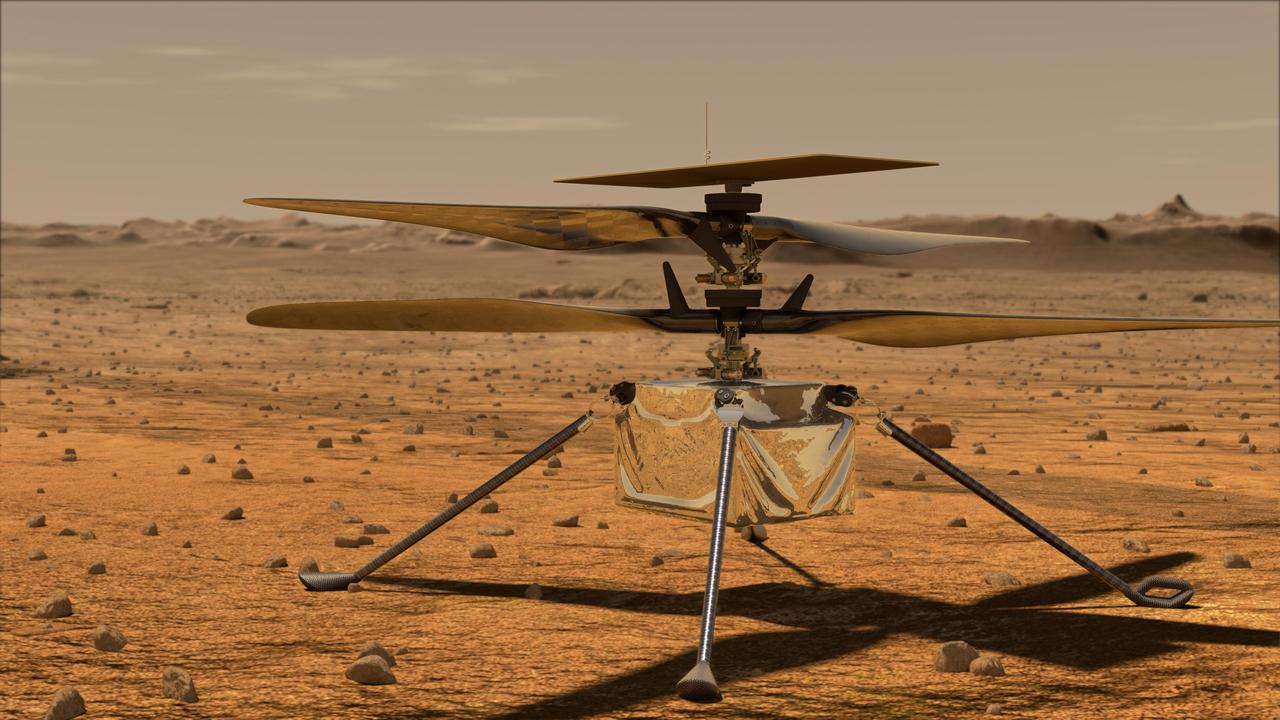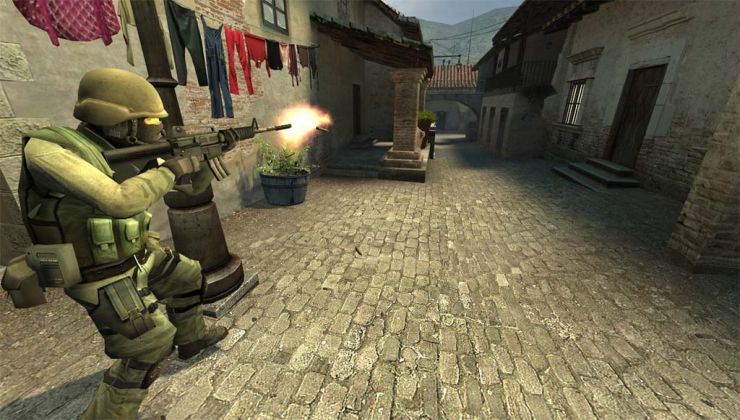Here is your morning dose of miscellaneous Linux news. Not gaming but still very cool - Linux has officially landed on Mars with the Perseverance Rover. Before we've been able to hit that mythical year of the Linux desktop, heck before Wayland has even been able to replace X11 on Linux desktops, we have now managed to blast Linux to another planet far away.
If you're not even the slightest space nerd like me you might be a bit confused, NASA just recently landed the Perseverance Rover on the red planet. That's cool by itself but Perseverance came with a rather fancy little Helicopter named Ingenuity, which according to NASA is "the first aircraft humanity has sent to another planet to attempt powered, controlled flight".
 Image Credit - Nasa
Image Credit - Nasa
As it turns out, it's powered by your friendly neighbourhood penguin — Linux! In an interview with IEEE Spectrum, Timothy Canham who is a Embedded Flight Software Engineer at NASA's Jet Propulsion Laboratory, mentioned:
This the first time we’ll be flying Linux on Mars. We’re actually running on a Linux operating system. The software framework that we’re using is one that we developed at JPL for cubesats and instruments, and we open-sourced it a few years ago. So, you can get the software framework that’s flying on the Mars helicopter, and use it on your own project. It’s kind of an open-source victory, because we’re flying an open-source operating system and an open-source flight software framework and flying commercial parts that you can buy off the shelf if you wanted to do this yourself someday.
So how long will it be before there's a new game about flying a little helicopter on Mars?
It’s kind of an open-source victory, because we’re flying an open-source operating system and an open-source flight software framework and flying commercial parts that you can buy off the shelf
This is weirdly inspiring in a way. I worked a bit on building robots in college and it’s nice to know the only thing stopping them from being as cool as the stuff nasa builds is my severe lack of intelligence and not some secret technology.
Except one little village called desktop.
There's no real question Linux already is dominating the world, from the smallest to the largest, from most people's pockets to even Mars.
Except one little village called desktop.
Technically, not the world but our Solar Systtem :D
Honest question: Has there ever been any mention on what kind of OS any of the other probes* had? I assume it was some bespoke system? Or maybe a Unix system? Maybe Windows even? xD
* Not only probes but also the Rover for example.
Powerpc 750@200mhz
256MB/ram
256eeprom
2GB flash
https://mars.nasa.gov/mars2020/spacecraft/rover/brains/
Well... The last linux can run on a n64, I can understand that it can run on a slowed down gamecube.
True. https://www.zdnet.com/article/to-infinity-and-beyond-linux-and-open-source-goes-to-mars/ But it seems even slower? (Sure it's an error).Have you seen the spects. Are ancient for a cpu in 2021.
Powerpc 750@200mhz
256MB/ram
256eeprom
2GB flash
https://mars.nasa.gov/mars2020/spacecraft/rover/brains/
Well... The last linux can run on a n64, I can understand that it can run on a slowed down gamecube.
That's for Perseverance, I think Ingenuity uses something else. Specifically a Snapdragon 801, which has Krait CPU cores (i.e arm). Not sure about the rest of the specs.
"the helicopter's processor board is powered by a Qualcomm Snapdragon 801 running at 500 Hz, not MegaHertz, Hertz."
From the solar panels, I kind of naively assumed that it was intended to stay airborne... forever! Perhaps docking back with Perseverance in the event of a storm, before buzzing back into the skies to provide aerial support for Perseverance's next foray around the crater.
Nope. 90 seconds, a bunch of data collected, crashing far, far away from Perseverance where it has no risk of damaging the main star of the show!!
Still an amazing accomplishment if they get it airborne though, given the atmosphere - the helicopter blades need to spin insanely fast in order to generate any lift! If it gets 10 seconds of airtime, I imagine the engineers will be delighted!
Linux:
Good enough for Mars,
Good enough for me!
I was reading about Ingenuity's flight time recently. It's a trial flight only and expected to last only 90 seconds before crashing back to the planet surface.
From the solar panels, I kind of naively assumed that it was intended to stay airborne... forever! Perhaps docking back with Perseverance in the event of a storm, before buzzing back into the skies to provide aerial support for Perseverance's next foray around the crater.
Nope. 90 seconds, a bunch of data collected, crashing far, far away from Perseverance where it has no risk of damaging the main star of the show!!
Still an amazing accomplishment if they get it airborne though, given the atmosphere - the helicopter blades need to spin insanely fast in order to generate any lift! If it gets 10 seconds of airtime, I imagine the engineers will be delighted!
That's a little different to what they said on the livestream (5 flights planned in total). Starved for interesting news like this, must find more!
Interesting! The Wikipedia article alludes to multiple flights too - each of which may last up to 90 seconds. Huh. I got my info from a Discovery Channel thing that was running a couple of nights ago. Fingers crossed it lands safely enough to recharge and take off again. God, it'll only take one high-wind landing to potentially scupper it!
The t-shirt:Stealing this.
Linux:
Good enough for Mars,
Good enough for me!
I'm curious what was that.
It's an extremely radiation hardened, military grade PPC750 (aka what Apple would call a 'G3'), and it's the same as previous Mars rovers and a number of I believe orbiters, other missions, etc.
Reliability in deep space is a huge concern, radiation is a huge deal (remember the 'cosmic ray bit flips'?), and it's a now heavily tested platform. I can't fault them for going with what they know has a well proven track record and reusing previous rover tech. Same reason it's VxWorks instead of Linux.
But yeah, it's not as dense as a modern (ish) Snapdragon 801 ARM SoC from 2014, and for a specific experiment where the performance/watt...per gram is a make-or-break, and even its potential for failure doesn't affect the main rover, it makes sense.
VxWorks isn't available for the Snapdragon 801, apparently, hence Linux, and here we are.
There's no real question Linux already is dominating the world, from the smallest to the largest, from most people's pockets to even Mars.
Except one little village called desktop.
Technically, not the world but our Solar Systtem :D
Honest question: Has there ever been any mention on what kind of OS any of the other probes* had? I assume it was some bespoke system? Or maybe a Unix system? Maybe Windows even? xD
* Not only probes but also the Rover for example.
As others have already hinted at here, NASA have used VxWorks for all of the other rovers, probes and orbiters. Before that they used NASA custom computer systems without any operating system as such.
well how much is the temperature in Mars? I bet it's far different from the standard powerpc cpu u can grab from a shop shelf.According to data from Curiosity taken in Gale Crater from 2012–2015, on a nice warm day in the middle of Martian summer the temperature might get up to a toasty 0° C (32 °F), while during the winter it falls to an average of −88 °C (–126 °F). The record high and low temperatures during that time were 20 °C (68 °F) and −127 °C (−197 °F).
I liked what I saw on another site, "Mars is now the second planet to have more computers running Linux than Windows."
I liked what I saw on another site, "Mars is now the second planet to have more computers running Linux than Windows."
2 - 0














 How to set, change and reset your SteamOS / Steam Deck desktop sudo password
How to set, change and reset your SteamOS / Steam Deck desktop sudo password How to set up Decky Loader on Steam Deck / SteamOS for easy plugins
How to set up Decky Loader on Steam Deck / SteamOS for easy plugins
See more from me